Developing Cultural Intelligence in Education: A Necessity for School Leaders
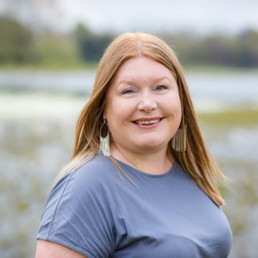
Written by Hannah Wilson
Founder of Diverse Educators
Cultural intelligence (CQ) is the capability to relate and work effectively across different cultures, backgrounds, and situations:
- Understanding cultural norms: Understanding how cultures influence values, beliefs, and behaviors
- Adapting to different cultures: Being able to work and relate with people from different cultures
- Making informed judgments: Using observations and evidence to make judgments in new environments
The concept of Cultural Intelligence was introduced in 2003 by London Business School professor P. Christopher Earley and Nanyang Business School professor Soon Ang.
In today’s increasingly diverse educational landscape, it is imperative for educators and school leaders to understand and cultivate CQ. This ensures not only the inclusion and success of all students whilst fostering a rich, diverse learning environment, but it is of equal importance to our staff to feel part of an inclusive workplace which prioritises belonging for all stakeholders.
Why Cultural Intelligence Matters
- CQ Enhances Inclusivity and Equity: CQ allows educators to recognise and value the diverse cultural backgrounds of their students and staff. This leads to more equitable teaching practices and policies that support all students and staff, irrespective of their identity.
- CQ Supports Recruitment and Retention: CQ promotes a commitment to belonging. Culturally intelligent employers, workplaces, leaders and teams will support the recruitment and more importantly the retention of people with diverse identities. CQ enables everyone to flourish and thrive.
- CQ Improves Student Engagement and Achievement: Students are more engaged and perform better when they feel understood and respected. Culturally intelligent educators can tailor their teaching methods to meet the diverse needs of their students, thereby enhancing learning outcomes.
- CQ Strengthens School Community: A culturally intelligent school promotes a sense of belonging among students, staff, and parents/carers. This strengthens the school community and encourages collaboration and mutual respect.
- CQ Prepares Students for a Globalised World: By fostering CQ, schools prepare students to thrive in a globalised world where cross-cultural interactions are the norm. This is essential for their future personal and professional success.
How to Apply the CQ Model
I use the CQ framework when I am working with school, college and trust leaders to shape their DEIB strategy:
- Stage 1: CQ Motivation – what is ‘our why’ for developing Cultural Intelligence and how are we communicating it to all stakeholders?
- Stage 2: CQ Knowledge – what data do we have/ need and how are we using it to inform our journey?
- Stage 3: CQ Strategy – what resources do we need, what milestones will we set and how will we evaluate our impact?
- Stage 4: CQ Action – what training is needed, what actions do we need to take and what behaviours do we want to change?
It is a simple but effective approach and helps leaders who are new to DEIB to get their heads around the cyclical process of shaping a strategy to improve the culture for everybody to flourish and thrive. It is also a core them in our Leading DEIB in Schools programme.
Developing Cultural Intelligence
CQ for School Leaders
- Self-Assessment and Reflection: Reflection to understand our own cultural biases and areas for growth. Tools like the Cultural Intelligence Scale (CQS) can be useful.
- Professional Development: Engaging in ongoing professional development focused on cultural competence and CQ is crucial. Training can provide valuable insights and strategies, as can curated reading. Check out the resources in our CQ toolkit.
- Leading by Example: Demonstrating CQ in interactions and decision-making sets a precedent for the entire school. Leaders should model behaviours that reflect cultural understanding and sensitivity. Leaders should also consider methods of communication and how inclusive language choices are.
CQ for Educators
- Ongoing Professional Development: Organising regular training sessions on cultural competence and CQ can help staff develop the necessary skills. Sessions should be interactive and challenging, an ongoing conversation instead of one-off training events. We can facilitate a space to explore a range of different themes.
- Inclusive Curriculum Development: Encouraging teachers to incorporate diverse perspectives and materials into their curriculum expands our knowledge of others. This not only broadens students’ horizons but also shows respect and develops awareness of different cultures. Find out more from our Diversifying the Curriculum toolkit.
- Mentorship and Collaboration: Fostering a culture of mentorship and collaboration where educators can share best practices and learn from each other’s experiences with diverse communities. Reverse mentoring can be a helpful tool to create a knowledge exchange, find out more in our webinar with RVP.
CQ for Whole School
- Inclusive Policies and Practices: Developing and implementing school policies that promote inclusivity and equity. This includes everything from admission policies to behaviour consequences, from interview processes to appraisals, ensuring they are fair and culturally sensitive.
- Student and Parent/ Carer Engagement: Creating platforms for meaningful engagement with students and parents/ carers from diverse backgrounds. This could include cultural events, forums, and regular communication channels for feedback such as surveys and focus groups.
- Diverse Representation: Striving for diverse representation among staff and leadership. This not only brings varied perspectives but also demonstrates a commitment to diversity and inclusion.
Conclusion
Cultural Intelligence is no longer optional in the realm of education—it is a fundamental competency:
- We need culturally intelligent schools and workplaces.
- We need culturally intelligent policies and processes.
- We need culturally intelligent leaders and educators.
- We need culturally intelligent classrooms and staffrooms.
At Diverse Educators we frame all of our training through the 3 Cs of Consciousness, Confidence and Competence. By becoming more conscious of who we are, of our own lived experience and how it shapes our world view, we can become more confident in how we interact with others, in our inclusive behaviours and our inclusive language. We can then become more culturally competent and develop cultural intelligence. School leaders and educators who develop and promote CQ contribute to an inclusive, equitable, and dynamic learning environment for students and staff alike. By prioritising Cultural Intelligence, schools can better serve their diverse populations, better prepare students to succeed in a globalised society and better support staff in their career progression and leadership development.
***********************************************************
If this theme resonates and is of interest, we have a training opportunity in January 2025. Join us for the CQ (Cultural Intelligence) Certification. There are limited places available so they will be allocated on a first-come-first-served basis.
Reflections on the Tragic Loss of Life and the Urgency of School-Based Mental Health Services
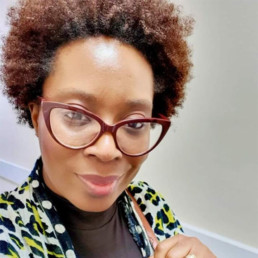
Written by Bianca Chappell
Bianca Chappell is a Mental Health Strategic Lead, Cognitive Behavioural Coach and Mental Health First Aider.
Recently, I’ve been deeply saddened by the tragic loss of young life, caused by someone struggling with acute mental illness. It is a stark reminder of how critical it is to address mental health early and effectively. For children and young people, the importance of timely intervention cannot be overstated. Schools, as the daily environment for so many children, are uniquely positioned to play a pivotal role in this.
In the wake of the COVID-19 pandemic, the mental health crisis among young people has intensified dramatically. According to recent data, one in six children aged 5 to 16 now require mental health support, a significant increase from previous years. This rise highlights the urgent need for schools to implement comprehensive mental health services.
Early Intervention and Support: A Crucial Step in Education
Early intervention is key to preventing mental health issues from escalating. Schools can provide a safe space where children can access the support they need before problems become more severe. By having designated mental health professionals on-site, schools can offer advice and support, helping students balance their emotions and manage their mental well-being.
Moreover, these professionals are essential for assessing and identifying risk profiles. By understanding the unique challenges each student faces, schools can tailor interventions to meet individual needs. This personalised approach is crucial in addressing mental health effectively and ensuring that no child falls through the cracks.
The Power of Community and Joined-Up Services
For these efforts to be truly effective, schools must work closely with community services. A joined-up approach ensures that recommendations, resources, and reviews of care are coordinated and comprehensive. Risk assessments should be an integral part of this process, ensuring that all aspects of a child’s well-being are considered.
Community involvement also allows for a broader network of support, including parents, healthcare providers, and local organisations. Together, they can create a robust support system that extends beyond the school walls, ensuring continuity of care and support for children and young people.
Why This Matters: Implementing Change in Education
The implementation of designated mental health services in schools is not just a beneficial addition; it is a necessity. With mental health challenges on the rise, our education system must adapt to meet the evolving needs of students. By doing so, we can foster a generation of young people who are not only academically successful but also emotionally resilient.
In conclusion, the importance of mental health services in schools cannot be overstated. By intervening early, assessing risks, and working collaboratively with community services, we can ensure that every child has the support they need to thrive. It is time to prioritize mental health in our educational system, for the well-being of our children and the future of our society.
Positive Ways to Talk About Difference, Equality and Discrimination with Children
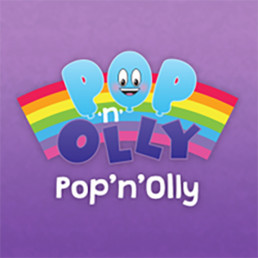
Written by Pop 'n' Olly
Pop‘n’Olly is the UK’s leading LGBT+ educational resource provider for primary aged children, parents, carers and teachers. The company's resources and books are being used in primary schools across the UK as well as globally in over 70 countries. www.popnolly.com
When I ask children to guess when same-sex marriage was introduced they come up with all sorts of wildly wrong suggestions… ‘The 1950s?’ they say and I indicate it’s a bit more recent. ‘The 1960s? The 1980s, 1990s?’ they throw out. When I tell them it was 2013 they are usually staggered – something that they’ve known all of their lives is so recent!
We live in a country that has not only legalised same-sex marriage but also has the Equality Act (2010) which protects a wide range of people of all ages, including people with different sexual orientations and trans/non-binary people. This is something to be celebrated with children. It’s not just in their school that staff encourage them to see other people as different but equal, but also in the whole of the UK – and that’s enshrined in law!
Prejudice relates to beliefs, thoughts and feelings about someone or a group of people. Prejudice is usually negative. Discrimination relates to actions against someone because of their identity or characteristics.
Discrimination is an action against someone because of their identity or characteristics. It grows out of prejudice, which is a (usually negative) belief about someone. As teachers, our job isn’t to police children’s thoughts, but instead, to help them see the wonderful variety of people who exist and help them not be afraid of these differences.
Using visuals, drop-in references, and explicit teaching we can ensure that children’s view of the world is one where there are millions of ways to be a human and some of these ways look different from them.
Celebrating differences isn’t just about helping all children feel good about themselves but it affects how we see others. When faced with differences we can help children to see those differences as strengths. Whilst we have many things in common, humans have evolved to be widely different across the globe and our experiences living different lives, both in the UK and elsewhere means we have different skills and knowledge. Sharing these differences allows us to learn from each other and to see the world through others’ eyes – sparking new thoughts, new ideas and new perspectives.
Here are some ideas you might try out with your children:
- Actively teach children about The Equality Act (2010). Use our posters, lesson plans and resources to ensure that children understand that treating people fairly and equally is part of the culture and law of the UK.
- Help children understand that people are not treated equally around the world and that change happens because of action. Examples of this might be the Stonewall Riots in the US, and the legalisation of same-sex relationships in the UK – that came about because of the work of Leo Abse MP.
- Instead of ‘Heads Down Thumbs Up’ at the end of the day, get the children to play a game where they partner up and have to find two things the same and one thing different from each other which they then share with others. Children could then try and find others who match (or are different) – or even make up their own rules for the game.
- Learn a ‘Sign of the Day/Week’ to help children understand that communication is different for different people.
- Play Paralympic sports in P.E. such as seated volleyball or goalball with the same competitive enthusiasm as other school sports (these were so popular with my Y6s!)
- Use CBBC’s ‘My Life’ series to help children learn more about other children’s lives, such as ‘When Mum Becomes Dad’ and ‘Mae’s Guide to Autism’.
- Ensure that your classroom displays represent a wide variety of people of all shapes, colours, abilities, genders, etc.
- Discuss scenarios with children about people who are experiencing discrimination. Talk through ideas on how this person may feel and what children could do if they witnessed this on the playground for example.
It is very hard to change the world, but we can make our schools somewhere where everyone is welcome and make our little bit of it more welcoming. We can help all children feel good about themselves by celebrating differences and we can help them to see that difference is not something to be afraid of, but a strength.
You can download our Discrimination, Prejudice and Equality Medium Term Plan, together with all the lesson plans, videos and resources that you need to work with your UKS2 class on this.
The Diversifying the Curriculum Conference 2025
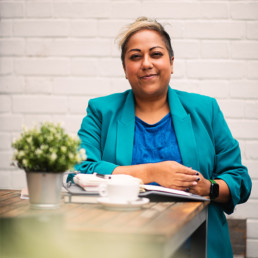
Written by Bennie Kara
Co-Founder of Diverse Educators
At Diverse Educators’ Diversifying the Curriculum Conference, Hannah Wilson started the event by reminding us all that the work on ensuring curriculum is deep, broad and diverse is not done yet. Our speakers certainly reminded us just how much we can do to make sure that we are constructing a curriculum for all.
Christine Counsell’s opening keynote was joyful to listen to, not least in part due to her incredible depth of awareness and knowledge about the humanities curriculum. She connected effective learning to effective curriculum design and spoke about how thoroughness is possible and how thin unconnected content does not serve the needs of our children. She reminded us that the humanities are replete with story and that each lesson should have children longing for the next one. In her keynote, she recognised the need to work hard to deliver unfamiliar content but also how that hard work pays off when students have experienced language, symbols and narratives repeatedly throughout the curriculum from year 3 onwards in her words meaning comes from relationships with everything else and that the curriculum should be a series of constant bursts of energy fueled by indirect residents and anticipation.
In Emily Folurunsho’s session, we were treated to an in-depth look at Black British history and how important it is to ensure that British students learn about Black British history and not just the history of Black Americans. She was clear in her message that the first time that students encounter a black figure from history should not be through the lens of enslavement. She talked us through three themes that allow us as educators to give a fuller picture of Black British history as possible. She talked about figures from the pre-Anglo-Saxon past, from the Tudor age and from the Victorian age. It is important, she said, that we study Windrush and its legacy, but that we also contextualise Windrush in light of broader race relations in the mid 20th century. She talked compellingly about how Black British history has a connecting influence in terms of providing representation and presence for black students, touching on her own history in Britain and how she personally learned about Black history. She went on to explore how Black British history is challenged in its presence and its validity. To ensure that Black British history is truly embedded into the curriculum, we must seek sources from Black voices and we must refer to Black historians.
In David Bartlett’s session on the global boyhood initiative, we learned about the need for healthy masculinity and healthy emotions in boys and how that goes hand in hand with healthy gender expectations. He explored what healthy gender expectations look like and how to facilitate young people in breaking free from limitations. In his session he explored gender differences and gender stereotypes, asking: what is nature and what is nurture? He highlighted the idea of pink and blue roles in the development of gender identity and responsibility.
Dana Saxon’s session on roots and relevance started with Dana’s personal experience of history as a subject. She talked about how history was not for her in her early experiences and how she felt that her history had been erased. It was only as an adult that she started family history research and that gave her a sense of personal ownership of her story and the ability to create and curate the family archive. She explored the disconnect in history teaching, asking who decides which histories are more important and invited us to consider who is remembered and who this suggests matters. She was clear in her message that history has been distorted, disfigured and destroyed and that erased histories disempower people. She stressed the need to find untold stories and the stories of migration because there are empowering stories hidden deep in our archives. It is a way, she said, of connecting the dots and answering the questions: how did we get here and why does it matter?
Samantha Wharton spoke about Black British literature. She referenced her work and resources on Leave Taking by Winsome Pinnock. Focusing on this text, she explored the context of Pinnock’s play and how teachers can take a cross curricular approach in delivering lessons on it. The text, according to Wharton, is a valuable insight into shared immigrant experiences, family dynamics, the generation gap and matriarchal figures, as well as themes of education and what is deemed sub normal. She encouraged us to go beyond the classroom when exploring literary texts like Leave Taking. She referenced the work of Lit in Colour, outlining the statistics on representation in literature and explored how a simple audit activity can develop thinking about diversity in the curriculum.
Krys McInnis’ session touched on the journey between diversifying the curriculum and decolonizing the curriculum. He asked us to consider positionality in approaching this process, stressing that all people have lived experience and we all have different starting points when undertaking curriculum reform. He spoke compellingly about redistributing power, centring the voices of the colonised and challenging the notion of who holds knowledge and how we make space for marginalised voices and epistemologies. He told us that unlearning is needed and that we need to be willing to adjust, not just approach the process of decolonization as a road map or a checklist so that we can say we are done. In essence he asked us to rethink knowledge and also how language is used today to define power and perspective.
I finished my day listening to Shammi Rahman talking about how RE can help us embrace unity. It was shocking to hear that 500 secondary schools report delivering 0 hours of RE and that led Shammi to ask the question: what is the value of RE for staff, for students, for communities and for parents especially when it can prevent misunderstandings and misconceptions around people and their faiths. Shammi helped us understand that children may be missing out on the opportunity to talk and listen as it is such a central skill in RE and that, in doing so as teachers, we can help them avoid generalisations about groups of people. She stressed that it is difficult to have broad knowledge but that we do need to make time to read and to become comfortable with being uncomfortable in delivering certain aspects of RE. We cannot let our fear of offending people or getting names wrong prevent us from teaching RE lessons that are outside of our own experiences. She went on to talk about what difference it may have made to her peers if they knew about the contributions of her community to the national story. She stressed the need to use quality resources, referencing the work of Mary Myatt and also the work of Nikki McGee. McGee’s work on Black history tours to enrich the curriculum is an excellent source of support for teachers. She finished by reminding us that the beauty of RE is in its intersections.
David Lowbridge-Ellis’s closing keynote reminded us that working in diversity, equity and inclusion is often an unpaid, frustrating and thankless job. He also reminded us that we need to articulate our commitment to the work and to keep bringing about the message of why this work is important. He referenced the work of Dr Rudine Sims Bishop in 1990 on the importance of windows, mirrors and sliding doors as a key metaphor. He pointed out that the choices we make in the resources and examples we put in front of our students may result in students feeling like they belong in the classroom. That it is crucial to make sure that there are windows into the world outside of students so that they are developing a broad cultural capital. He too referenced the work of Lit in Colour. But he returned to his driver and one that perhaps we should all pay attention to, the need to have children we are serving to have a better school experience then we did. It is incredibly important that our values show that we are committed to this work. And it is not just about the curriculum, he spoke about accountability and how some people have the opportunity to shape and influence recruitment, to shape development priorities and equality’s objectives. This is a large sphere of influence.
It was not possible to attend every single session, as much as I would have liked to. But there were common threads and I hope that you can see them in this summary. The Diversifying the Curriculum Conference remains as relevant as it did five years ago because as we said at the start, the work is not yet done.
The one human skill that powers all others: Is empathy the secret to wellbeing, inclusion & the future of work?

Written by Ed Kirwan
Ed Kirwan is the Founder and CEO of Empathy Studios, an organisation using film to develop empathy, a vital human skill. A former science teacher and Head of Chemistry, Ed transitioned into filmmaking in 2018, launching The Empathy Programme in 2020. Ed also founded Empathy Week, the world’s largest empathy festival, reaching over 1.3 million students in 50 countries.
As an educator, you’re often faced with student situations you can’t anticipate. Those situations are almost always personal, nuanced and highly-specific to that individual. They require a human response. They require empathy.
Empathy is the skill to understand another and the ability to create space for someone to reveal their authentic self, whilst reserving judgement.
Empathy is no longer merely a nice-to-have; it’s essential and has been listed as one of the most vital skills for the 21st century. Is vital for conflict resolution, it helps increase creativity) and can even reduce cyberbullying. Empathy can be passed from generation to generation View here and so teaching it has far-reaching benefits beyond the immediate impact.
Neighbourhood diversity has doubled on average in the UK since 2001 and, in some towns, it has increased ten fold. This should be a wonderful opportunity of celebration and learning, yet we know from the UK riots this summer that cohesion and community isn’t a given. It also doesn’t come about from simply teaching students to ‘be kind’ and ‘be tolerant’. Empathy sits at the foundation of the human skills that enable inclusion, communication and adaptability that are crucial in our globalised world.
Since 2020, my team and I have been helping educators give their students the tools needed to develop empathy – and we continuously research the impact, in partnership with Cambridge University . In these last five years we’ve learnt a lot. Our Empathy Programme has engaged 175,000 students and our annual festival, Empathy Week, has reached over 1.3 million students in 50+ countries. But for me, it all started in the classroom.
At the age of 22, I began teaching science in North London at a co-ed state school – something I deeply loved. It taught me a lot about privilege, society and the importance of empathy. It also taught me that humans are complex social and emotional beings.
Much of my motivation comes from having taught the infamous (self-named) “U-gang” – a group of 24 boys who all received ‘U’ grades in their christmas mock exams.
They had a lot of anger and lacked motivation. In their eyes, they were already destined to be a failure. They hadn’t yet learnt how to communicate their needs effectively, or they were misunderstood – in all honesty I think it was both things at once. As I got to know them I realised they were, quite simply, scared young men.
Teaching that group was one of the most rewarding experiences in my teaching career. None of the “U-gang” ended up with a U grade, despite one of my students missing his Chemistry exam because he was in a police cell. They all passed.
Looking back now it’s not because I was the best science teacher, but because I took a genuine interest in them as individuals. Who did they live with at home? What hobbies did they have? What did they aspire to be? What made them tick?
I took as many steps as possible to understand and develop a healthy rapport with the class, including delivering science classes on the basketball court and shifting our practical lessons to be less daunting. I was using empathy, I just didn’t have language for what I was doing yet.
Empathy underpins everything needed to make a child feel seen, heard and understood. Everything that’s needed to make someone feel safe and like they belong and that’s what we’re all really after isn’t it? To belong?
Empathy is not a value or a trait. It is a skill which can be actioned and, crucially, taught. Our pilot research with Cambridge University explores the impact of our term long programme to develop empathy skills in 5-18 year olds. Teachers report a measurable impact to empathy levels – and excitingly they also report improvements to behaviour and increased global citizenship after completing the programme.
Crucially there are three drivers of success that manage to build empathy successfully:
1) Engage and entertain students – A lot of education content can be boring and only serves to transfer information rather than ignite genuine conversation and learning. Our programme and films are a trojan horse for empathy building. They excite students from the very start and in turn lead to conversations and connection.
2) Increase the amount & diversity of experiences of students – We can’t all fly around the world, but we can allow students to experience real life stories through film. From Lipa who talks about the right to wear a Hijab in sport to a Mexican paralympian who is now giving back,, students can gain insight into themes such as culture & identity, disability, bereavement, sustainability & mental health.
3) Skills building can’t be a one-off – Empathy is a muscle and the best results come with sustained and long-term intervention. It’s the schools that build empathy into a golden thread of their school that are seeing the benefits.
As educators and teachers, we need more support to help equip young people with the human skills they need. As the world becomes ever more connected and AI transforms the way we live and work together, it is our human relationships, adaptability and resilience that will allow us to thrive – and empathy is the one human skill at the foundation of this.
LGBT+ Education in School - Having Effective Conversations with Parents
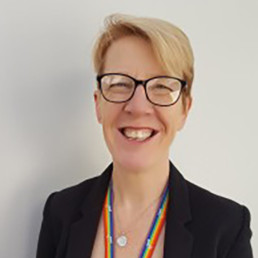
Written by Mel Lane
Mel Lane (she/her) is Head of Education at Pop’n’Olly. She has been a primary school teacher and teacher trainer for nearly 30 years and worked in schools on LGBT+ inclusion policies with thousands of children and school staff. Mel is a co- author of What Does LGBT+ Mean? (Pop’n’Olly, 2021).
When it comes to LGBT+ education in school, parents are often portrayed in the mainstream media as unsupportive and battling with teachers – but the reality is completely different. 82% of parents actively want their children to be taught about diverse families, including those with same-sex relationships. Having worked with over 10,000 children, I have experienced, time and time again, that parents are almost always supportive of LGBT+ inclusion work in school.
However, there are of course still a minority of parents who struggle with, and have concerns, about LGBT+ education. This is why empowering schools and teachers to have effective conversations is important. But how do we do this? Here are some themes that you may wish to include in these discussions:
Ethos and Values
Chances are you already promote equality and celebrate difference in your school. Maybe it’s in your school mission statement? e.g.
‘Brave, unique, caring and kind’
‘Hope, community, respect, love’
‘Respect for each other, Respect for our school, Respect for learning’
LGBT+ isn’t an add-on, it’s part of this whole-school approach. So when having conversations with parents, it’s vital you keep coming back to your whole-school ethos and discuss how LGBT+ education is a part of this.
Children’s Mental Health
We know that children learn better when they feel relaxed and able to be themselves. One teacher was so pleased to share with me how much more animated and engaged a Year 1 child had become after a session on families included two Mums, just like her family. All children benefit from conversations about LGBT+ inclusion because when we celebrate diversity we send a message to everyone that they are welcome in school whatever their uniqueness looks like.
Knowledge and Understanding
63% of 8-15 year olds know someone close to them who is LGBT+ Children are already having conversations about LGBT+ lives and some of them are searching for information online. School is a safe place where children can ask questions of trusted adults to find out reliable, accurate information. UK children all live in a country where being LGBT+ is protected by law and we shouldn’t hide this information from students. In fact, under the United Nations Convention on the Rights of the Child (UNCRC), all children have a right to this information.
Legal Obligations
Helping young people understand and develop positive relationships with people who are different from them is part of UK law and included in the Relationships and Sex Education (RSE) Guidance for Schools
The Public Sector Equality Duty (Section 149 of the Equality Act, 2010) states that schools must have due regard to “the need to eliminate discrimination, advance equality of opportunity, and foster good relations between persons who share a relevant protected characteristic and persons who do not share it.”
Ofsted guidance also states that, “Schools can choose to teach the beliefs of any faith on the protected characteristics. They may explain that same-sex relationships and gender reassignment are not permitted by a particular religion. However, if they do so, they must also explain the legal rights of LGBT people under UK law, and that this and LGBT people must be respected”
Supporting Parents
Sometimes parents worry that life will be harder for their child if they are LGBT+. Sometimes they’re worried about being judged by other parents. Schools often have a lot more experience supporting LGBT+ young people than parents do. A parent of a trans child told me how much better they felt that their child’s school was supportive of their child’s transition – it gave the parent confidence and helped them navigate a completely new and sometimes challenging time.
Conversations with parents almost always eliminate fears, tackle misconceptions and build better relationships. You can find out much more information on how to have these conversations in Pop’n’Olly’s ‘Discussions With Parents’ document.
How Do We Make Our Classrooms Feel Like Home to Each and Every Student
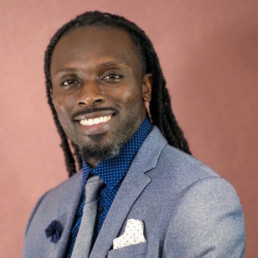
Written by Kwame Sarfo-Mensah
Kwame Sarfo-Mensah holds a Bachelor’s degree in Mathematics and a Master’s Degree in Elementary Education from Temple University. For nine years, he served as a middle school math teacher in Philadelphia, PA and Boston, MA. Currently, he is the founder of Identity Talk Consulting, a global educational consulting firm. Throughout his 17-year career as a classroom teacher, author, and consultant, Kwame has earned numerous accolades for this work. His newest book, "Learning to Relearn: Supporting Identity in a Culturally Affirming Classroom", will be coming out Fall 2024.
For context, I’m a first generation Ghanaian American who has spent all but three years of my life living outside of Ghana. While I mostly understand my family’s home language, Twi, I grew up not really being taught the language by my parents. We learned a few Twi words here and there but English was the main medium of communication in our household and every other environment we found ourselves in. Growing up in the United States, I felt like an outsider. I thought those feelings would change when I moved to Ghana at 12 years old and lived there for 3 years. Even while living there, I felt like an outsider.
I’ve never been a clean fit in any of my worlds. I’ve always been different. My whole life has been spent living outside the margins of the dominant culture. In more ways than one, I’ve received harmful messages and mistreatment to remind me of that reality. The following traumatic scenario, which I’ve played out in my mind for the last 10 years, is a prime example of this predicament.
Okay, let me set the stage…
Imagine yourself on an airplane that is heading to the Kotoka International Airport. As the plane makes its descent towards the airport, your anxiety heightens because you know the course of events that are about to follow. The minute you get off the plane, you know you’ll have to go straight to the immigration booth, which means that you’ll have to hand over your American passport to a Ghanaian immigration officer for visa inspection. By all means, what I’ve mentioned thus far is standard protocol but this is where things take a left turn. So you hand your American passport over to the immigration officer, he turns to your bio page and discovers your name, “Kwame Karikari Sarfo-Mensah”. For a brief moment, the officer looks at you and then looks back at your passport. At this moment, you have two options for a response. You can either…
- respond to the officer in English, leaving yourself subject to questioning from the officer as to why you have this strong Ghanaian name and are not speaking to them in Twi.
- respond to the officer in Twi, leaving yourself subject to ridicule and harsh criticism as to how you could be Ghanaian and not be able to speak Twi fluently.
Unsure of how to respond, you freeze in panic because you know what’s about to happen next. The officer will either call you an oburoni and crack jokes about you with their co-workers nearby or look at you in disgust and shame you for not being able to speak Twi fluently.
While this story is specific to my experience, I can assure you that others who grew up as third culture kids or immigrant students have dealt with a similar scenario to the one I just described. Whether you teach abroad in an international school or in a K-12 school within the United States, chances are you’ll have a few students within your classrooms who are struggling to make sense of their identities or searching for spaces where they are welcomed, accepted, and fully embraced for who they are. A space where no one is interrogating them or invalidating their lived experience.
These students I’m referring to are your multilingual students, students with IEPs and 504 plans, immigrant and migrant students, neurodiverse students, students who are disabled, students who practice non-Christian faiths, students who are BIPOC, students who are LGBTQ+, etc. Although they may enter your classroom with vastly different lived experiences, they are two things they all have in common:
- They find themselves outside the margins of white dominant culture.
- They all deserve to be in a classroom that feels like HOME.
Understanding that every student defines home differently, how can we make our classrooms feel like home for each and every student? We can start by thinking about our own homes. When you’re in our homes, we’re in spaces where……
- we feel a sense of psychological and emotional safety and comfort
- we can express ourselves unapologetically
- we receive support and care from loved ones
- we belong and feel welcomed,valued and accepted
- we thrive off of routine and stability
- we’re connecting intimately with our loved ones
- cherished memories and family history are held near and dear to our hearts
Regardless of who we are and where we come from, we all want to experience that feeling of home as I’ve described above. We deserve that feeling because it’s a human right, as recognized by the United Nations. In this world where government officials across the globe are shutting down DEI programs, censoring and banning culturally responsive and identity-affirming curriculum in schools, and pushing anti-LGBTQ+ legislation, it is more imperative than ever for us, as educators, to create classroom spaces of inclusion and belonging that feel like home for our most vulnerable students.
We may not be able to solve all the world’s problems but there are a few key things we can do to make our students feel comfortable in our classrooms:
- Pronouncing student names correctly
- Using correct gender pronouns for students
- Incorporating translanguaging practices in our daily instruction
- Adopting a restorative approach to discipline and relationship building
- Understanding that social emotional learning must be done with an antibias, antiracist (ABAR) lens.
- Planning lessons and employing instructional techniques that account for the learning styles of neurodiverse learners.
- Making our classrooms more accessible to students with physical disabilities
In the end, no student should ever feel the way I felt during my childhood. By making our classrooms feel like home for our students, we’re committing ourselves to normalizing and embracing the beauty of difference, as informed by the intersectional nature of our respective identities. And finally, we’re committing ourselves to building learning spaces where joy, love, and acceptance are living parts of our classroom culture.
The Hypocrisy at the Heart of Racist Riots
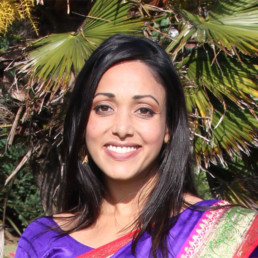
Written by Dr Nilufar Ahmed
Dr Nilufar Ahmed is a multi award winning Chartered Psychologist, Academic, and Accredited Psychotherapist. She works as an academic at the University of Bristol where her research and pedagogy focus on Inclusion and Engagement. Her work is situated in an antiracist and Intersectional framework. She is regularly invited to comment in the media on all things psychology and has delivered training, keynotes, and consultancy services across sectors including HE, business, and Government.
Originally published by The Conversation on 9/8/24
When news broke that a 17-year-old male had stabbed a number of young girls in Southport, misinformation swiftly followed. First, that the perpetrator was an asylum seeker or refugee who had come to the UK on a boat. This was discredited and information emerged that the individual was British-born. But the circulation of disinformation, including a fake, Arab-sounding name, led many to argue it must have been a Muslim male.
Though the perpetrator has no known links to Islam, violent, far-right rioters still mobilised to attack mosques. Islamophobic violence spilled onto the streets in the worst race riots Britain has seen in years.
The fact that this misinformation was so readily believed can be partly explained by psychology, and how we think about people who look like us, and about others who don’t.
People are conditioned to identify with their in-group – others who are like them on a range of markers such as race, gender, class or nationality. The maintenance of this shared identity largely requires “us” to be different (meaning better) than “them” by making negative inferences about them.
This automatic psychological response explains how people can see the self and the in-group as complex and fluid (for example, not all white people are criminals) but frame the out-group as homogeneous and fixed. This can lead, as we’ve seen, to some people casting all black men as dangerous, Muslims as terrorists, asylum seekers as opportunistic and refugees as “taking” jobs and healthcare resources, justifying the dislike and even hatred of the out-group.
The racism of this public reaction to a horrific attack on children is stark when you compare it to other recent events.
When a white male killed a 14-year-old black boy named Daniel Anjorin with a sword in May, protesters did not mobilise around the country to “protect children”. Neither were white men as a group deemed a threat to the safety of children.
Whenever crimes, however heinous, are committed by white perpetrators, they are more often viewed as the acts of an individual who was at fault because of mental health issues or falling in with the wrong crowd. There is a long history of disparate treatment of criminals in the media linked to race.
People are socially conditioned to think heinous acts are committed by outsiders. There are a number of cognitive biases at play here, including contextual bias, where decisions are influenced by background information rather than the crime itself, and affinity bias, where people prefer others who are like them.
These biases are present in individual cases, but also across the judicial system. Inequalities in sentencing perpetuate the narrative that people of colour are more dangerous and disposed to crime.
A study commissioned by the Crown Prosecution Service also found that people of colour are significantly more likely to be prosecuted than white people for the same crimes. Such inequity results in overrepresentation in prisons and with convictions. This then feeds the narrative that people of colour are more likely to commit crime – when in fact they are simply more likely to be prosecuted.
The Blame Game
In times of scarcity, this in-group/out-group bias can become simplified and exacerbated to justify withholding resources from the out-group, who the in-group perceives as “undeserving”. Out-group scapegoats offer an easy and reliable way of deflecting responsibility by those with power.
This is what has happened over the past 14 years in Britain. While the Conservative government created an unstable economic climate and deep poverty through cuts to public services and economic turmoil, it is politically convenient to suggest the reason for scarce resources is a small number of asylum seekers.
The previous government used the negative attitudes towards refugees and immigrants as a core pillar of its election campaign. Politicians used increasingly inflammatory language in relation to immigration, blaming immigrants for things like the housing crisis and depleted health resources as a way shifting attention from their cuts in spending.
Anti-racist counter-protests have organised all around the country. Simon Dack News/Alamy
Over time, the scapegoats have been boiled down to one homogenised group of people who are not white. This is apparent in the differential treatment of asylum seekers from Ukraine, who were welcomed to the UK and allowed to work and be housed.
Asylum seekers from the rest of the world are not allowed to work on arrival and receive just £49.18 a week. This feeds the narrative that white people work, while people of colour don’t (though somehow are simultaneously “taking our jobs”).
The relentless scapegoating dovetails with the psychological biases we are all socially conditioned to fall for, creating an “us” and “them” environment that can easily turn violent. The events of the past two weeks have awakened much of Britain to the consequences that can arise when society is defined this way.
Inclusion Beyond Tolerance.

Written by Claire Stancliffe
Claire Stancliffe is an education consultant specialising in gender equity, diversity & inclusion and positive masculinities. She’s on a mission to break down gender stereotypes in schools.
Pride month is well underway, and it’s got me thinking about the thorny issue of tolerance. It’s a word we hear often associated with diversity in general, but very commonly with the LGBTQIA+ community. Tolerance is the idea that we do not need to understand someone to be able to get along with them. That we can all rub along together, to live and let live. Sounds harmless enough right? Yet if I told you I would tolerate your company for the evening, I don’t think you would be thrilled.
When it comes to inclusion, the notion of tolerance falls short. It says, “I don’t mind you breaking the rules”, while all the time upholding and even strengthening social norms. Due to religious differences, the ways we have been socialised and the norms of our various cultures, it will never be possible to create a world where we all see eye to eye on everything, but if we want to encourage true inclusion I think we need to look beyond tolerance, to a more expansive view of what exactly ‘normal’ is.
Breaking gender stereotypes
Up until very recently, our frame of reference for ‘normal’ when it comes to how we raise our children has been cis-heteronormative – that is that everyone’s gender is that which is assigned at birth (or ‘cisgender’), the expectation that all people are or will be heterosexual (or ‘straight’), and that girls behave according to one set of rules, and boys behave according to another. This has led to harmful stereotypes that perpetuate inequality.
It struck me recently that when we encourage young people to see past the narrow confines of gender stereotypes, we are often doing so from a tolerance perspective. By pointing out that it’s possible to break the norm, we can inadvertently reinforce it. It’s ok for girls to be good at maths, but it’s not part of the norm. It’s ok to marry someone of the same gender, for example, but it’s not part of the norm. It’s ok for a boy to wear makeup, but it’s not part of the norm. The terms ‘male nurse’ and ‘lady doctor’ that are still so commonly used come to mind here.
For children, and indeed all people, breaking away from the group and doing something that’s perceived as different can be a stressful position. Many of us avoid taking the risk, preferring to go along with the crowd and feel acceptance, which can severely limit our options for happiness.
Redefining the norm
Breaking gender stereotypes is not just about allowing exceptions; it’s about redefining what the norm can be. This requires creating environments where diversity in gender expression and identity is not just tolerated but celebrated.
Here are three strategies that I think can shift the dial in a positive direction.
- Provide diverse role models whenever possible. Consider where you have the opportunity to showcase different stories – can a maths word problem include a scenario with two mums; a girl playing with toy cars; a boy buying nail varnish? Invite a diverse range of professionals to come and speak to your class that counter common stereotypes, and remember to include men who enter caring professions, for example, as well as women in STEM. The more possibilities children are exposed to, the broader their horizons grow in terms of futures they imagine for themselves.
- Watch your language. Use gender-neutral terms where possible, and certainly for all job roles. Instead of ‘fireman’ use ‘firefighter’, for example, and instead of ‘lollipop lady’, try ‘crossing guard’. When referring to the group, avoid using gender identifiers unless it’s relevant. Instead of ‘boys and girls’, use terms like ‘team’, ‘class’, ‘everyone’. Small changes can make a big difference in how children interpret the world around them and the choices open to them.
- Actively challenge stereotypes. Don’t shy away from discussing stereotypes when they come up, but approach it with curiosity. Try asking ‘what makes you say that?’ and engaging as the young person explains their point of view. Highlight examples from their real lives that go against stereotypes, and encourage them to think about stereotypes that they themselves might defy. This can help them start to question the validity of broad, catch-all statements.
As adults, we can influence the way young people see the world and their place within it. So let’s move past a tolerance mindset, to one that truly celebrates them for who they are, that helps them connect to others they identify with, and that cheers them on as they grow into who they are really meant to be.
Pride Month 2024 - Responding to homophobic language: guidance for schools using Oracy and No Outsiders
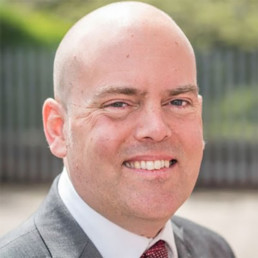
Written by Andrew Moffat
Andrew Moffat has been teaching for 25 years and is currently PD Lead at Excelsior MAT. He is the author of “No Outsiders in our school: Teaching the Equality Act in Primary Schools” and “No Outsiders: everyone different, everyone welcome”. In 2017 Andrew was awarded a MBE for services to equality and diversity in education and in 2019 he was listed as a top ten finalist in the Varkey Foundation Global Teacher Prize.
Ensuring equality for all cannot be achieved if any group of people feel they are unseen, unwelcome or feel targeted because of the person they are. As teachers, we strive to ensure that everyone feels seen, everyone feels welcome, and no one feels they have to hide their true selves, or parts of their identity.
In preparing children for life in modern Britain, we need to be clear and consistent in our efforts to make schools a safe place where children understand there are different ideas in society and prejudice may exist in the outside world, but prejudice and discrimination do not exist here, because in our school, there are “No Outsiders” and everyone is welcome.
Children are allowed to hold different views. I am a big champion of oracy as it encourages children to see both sides of a debate and understand it is possible to hold two views at one time. However, while different views are embraced, the othering of a group of people is not allowed. A child can disagree with a point of view and still show respect; this is the golden thread of a no outsiders ethos.
If a child chooses to use homophobic language, this must be tackled immediately. Children must understand there is no tolerance of prejudice at our school. It is the job of any adult to respond to homophobic language, as this is a safeguarding issue (KCSIE, 2023, “Children who are LGBT” page 51),
A quick response is; “Excuse me?” or, “What do you mean by that?” followed by, “And what do we say at our school?” to which the expected reply is “There are no outsiders”. Reiterate, “That’s right, there are no outsiders here, so you need to think about the language you are using. How are you going to put that right?”
All homophobic incidents should be recorded, and parents informed.
If homophobia arises in a debate where no individual is being targeted but there are attitudes forthcoming that need to be addressed, make sure they don’t go unchecked. An oracy framework enables us to challenge such attitudes effectively by asking the class to respond; “Would anyone like to respond to that?”. If the comment is offensive, for example if a child says, “gay people are wrong” it’s important that the adult responds immediately along the lines of;
“Can we think about the language we are using here… those ideas may exist in the outside world, but we need to be really careful about the words we use here. To say something is ‘wrong’ is different to saying, you ‘don’t agree’ with it. Do you want to re-phrase so that you are not othering anyone or being offensive?”
“What does the law say about this?” (The Equality Act, British law says it’s ok to be LGBT)
“What do we say at our school about different people?” (We say there are no outsiders, and everyone is welcome here.)
It’s vitally important the teacher addresses the attitudes while not giving their own opinion so we don’t get in to an argument or lead the children down any particular path. What we need to do instead is remind children it is ok to hold different views (“and that’s what makes this debate so interesting”) and we can still show respect and non-judgement. It’s ok to disagree with one another, the important thing is that everyone still feels they have a place here, including the child who is being offensive. It is the child’s views that are not welcome; the child is still welcome.
If a child brings their faith into the discussion; “My religion says it’s wrong”, respond in this way:
“You’re right, there are different views about this in different religions. And that’s the best thing about living in the UK- we have different views and beliefs, freedom of speech and democracy, and we have the Equality Act which protects religion and belief, so people are allowed to hold those views under British law. Who else is protected under the Equality Act? (disability, age, race, pregnancy and maternity, marriage and civil partnership, sex, LGBT) hmmm that’s interesting isn’t it – on the one hand you have religion and belief and on the other you have LGBT … both protected, both allowed… so I suppose we have to find a way to respect both views. We can co -exist without saying the other is wrong….”
And then open out the conversation, move it along using the oracy technique; “Who wants to build on that?”
Keep coming back to “That’s why we say there are no outsiders… we can have different opinions, and we can still respect each other. No one is pushed out because of their religion, their race, or because of their sexual orientation.”
I recognise that these conversations are not easy but they are important and we need to be having them with our children. My advice is to practice responses with each other as a staff team.
Here are some useful assembly links from www.no-outsiders.com:
https://no-outsiders-assembly.blogspot.com/2024/05/pride-2024.html
Assembly pictures : Football shirt (no-outsiders-assembly.blogspot.com)
Assembly pictures : football (no-outsiders-assembly.blogspot.com)
Assembly pictures : Bathroom (no-outsiders-assembly.blogspot.com)
Assembly pictures : Beano (no-outsiders-assembly.blogspot.com)
Assembly pictures : LGBT history month (no-outsiders-assembly.blogspot.com)
Assembly pictures : What is homophobia? (no-outsiders-assembly.blogspot.com)
Assembly pictures : Curly hair (no-outsiders-assembly.blogspot.com)
https://no-outsiders-assembly.blogspot.com/2024/06/veteran.html

